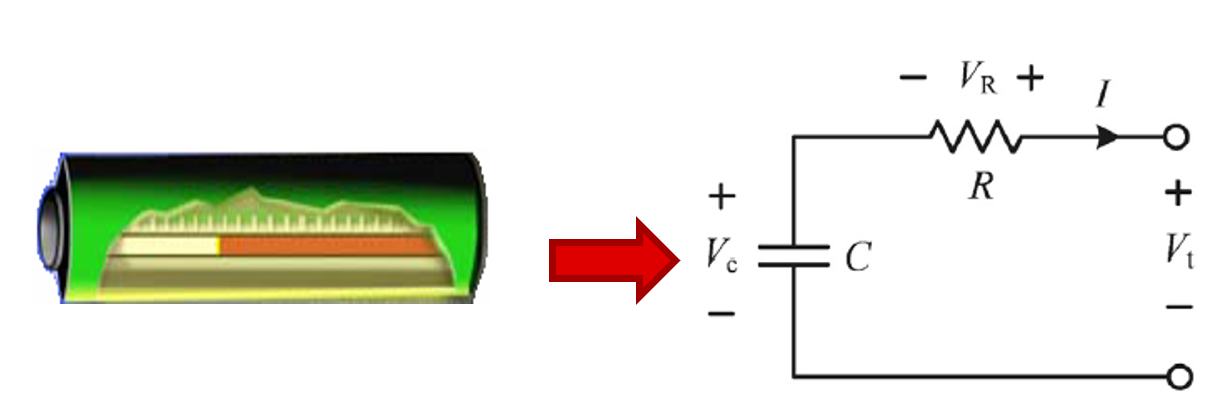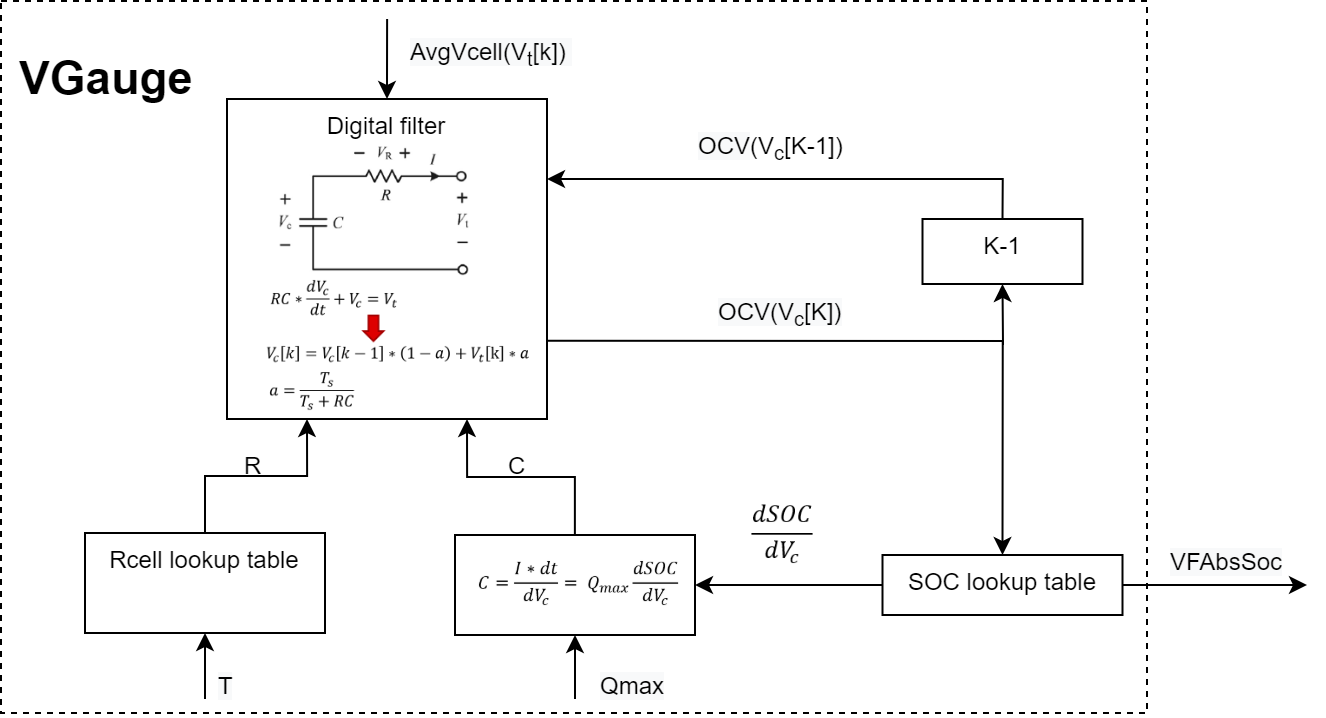SLAAEF5 March 2024 MSPM0G1505 , MSPM0G1505 , MSPM0G1506 , MSPM0G1506 , MSPM0G1507 , MSPM0G1507 , MSPM0L1303 , MSPM0L1303 , MSPM0L1304 , MSPM0L1304 , MSPM0L1304-Q1 , MSPM0L1304-Q1 , MSPM0L1305 , MSPM0L1305 , MSPM0L1305-Q1 , MSPM0L1305-Q1 , MSPM0L1306 , MSPM0L1306 , MSPM0L1306-Q1 , MSPM0L1306-Q1
- 1
- Abstract
- Trademarks
- 1Introduction
- 2Algorithm Introduction
- 3Gauge GUI Introduction
- 4MSPM0 Gauge Evaluation Steps
- 5MSPM0 Gauge Solutions
- 6References
2.2.1.2 Battery Model Filter
In Section 2.2.1.1, NomAbsSoc is evaluated based on purely one battery parameter (Voltage or current accumulation). One method is to use the relationship between OCV (positive and negative electrodes balance) and NomAbsSoc (different lithium ion concentrations). Another method is to use the relationship between coulometer (Electron numbers) and capacity (Movable Lithium ion numbers). This kind of strategy requires less computing resources, as only coulometer is needed to work in every cycle. However, it needs to wait until the NomFullCap is generated for 1-2 battery cycles.
Another strategy is used to create a model or a filter to evaluate the NomAbsSoc or even the CusRltSoc based on all the input parameters, like current, voltage, time and temperature. The common methods are equivalent-circuit model, Kalman-filter, neural network and so on. The accuracy of the SOC output mostly lies on the model accuracy. However, more complex model means more MCU computing resources.
An economic method is to use a simplest equivalent-circuit model (a first order RC model), shown in Figure 2-5, to output NomAbsSoc with only voltage input.
 Figure 2-5 Battery Model
Figure 2-5 Battery ModelFigure 2-6 shows the software flow chart of VGauge. However, in this solution, the SOC lookup table function only needs to be used to search the wanted parameters in this battery model. For the SOC part, it is purely come out from IGauge.
 Figure 2-6 VGauge Software Flow
Figure 2-6 VGauge Software FlowFor more about the NomAbsSoc accuracy outputted from VGauge, see MSPM0 Gauge L1 Solution Guide.